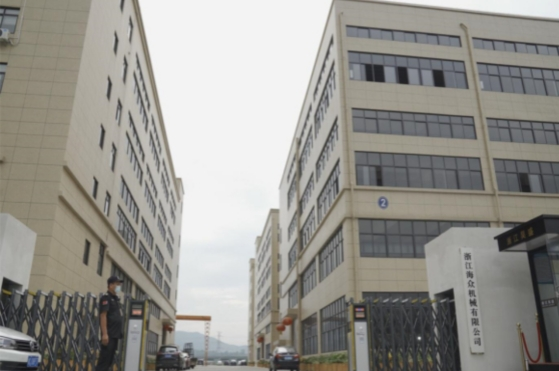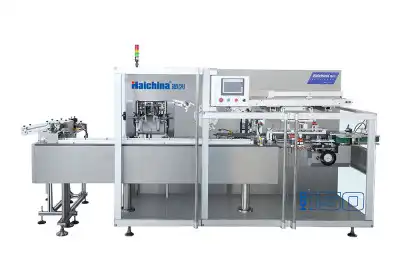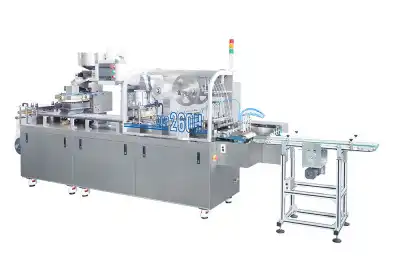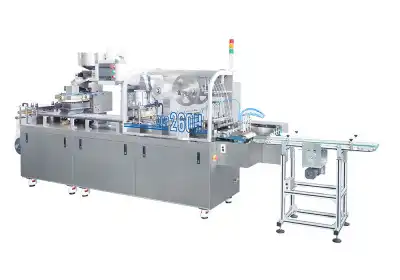Basic Working Principle of Automatic Cartoning Machine
Automatic cartoning machines, also known as automatic cartoners, are sophisticated packaging devices designed to streamline the process of inserting products into cartons or boxes. These machines operate on a fundamental principle of continuous motion, synchronizing various components to efficiently fold, fill, and seal cartons. The basic working principle involves a series of coordinated steps: carton feeding, product insertion, and carton sealing. Utilizing advanced mechanisms such as rotary suction boxes and synchronized pushing systems, these machines ensure smooth, rapid, and precise packaging operations. By automating the cartoning process, these machines significantly enhance production efficiency, maintain consistent packaging quality, and reduce manual labor requirements across various industries, including pharmaceuticals, cosmetics, and food packaging.
Components and Mechanisms of Automatic Cartoning Machines Carton Magazine and Feeder
The carton magazine is a crucial component of an automatic cartoning machine, serving as the storage unit for flat, unfolded cartons. This magazine is designed to hold a substantial quantity of cartons, ensuring a continuous supply during operation. The feeder mechanism, typically employing vacuum suction cups or mechanical grippers, extracts individual cartons from the magazine. This process is precisely timed to synchronize with the machine's overall cycle, maintaining a steady flow of cartons into the forming section.
Carton Forming and Erecting Station
Once a flat carton is extracted from the magazine, it enters the forming station. Here, a series of plows, mandrels, and folding mechanisms transform the flat carton into its three-dimensional shape. This process involves carefully scored and pre-creased lines on the carton, allowing for precise folding. The erecting station ensures that each carton is fully opened and squared, preparing it for product insertion. Advanced cartoning machines may incorporate sensors to detect any malformed cartons, automatically rejecting them to maintain packaging quality.
Product Insertion Mechanism
The product insertion mechanism is the heart of the automatic cartoner. This system can vary depending on the nature of the product being packaged. For blister packs, vials, or tubes, a pushing mechanism might be employed to insert the product horizontally into the open carton. Alternatively, for items like bottles or loose products, a vertical drop system might be used. Many modern cartoning machines feature rotary suction boxes or synchronized pushing devices, as mentioned in the content provided. These advanced mechanisms ensure smooth and rapid product insertion, minimizing the risk of damage and maximizing throughput.
Operational Sequence and Synchronization
Timing and Control Systems
The operational sequence of an automatic cartoning machine is governed by sophisticated timing and control systems. These systems ensure that all components work in perfect harmony, from carton feeding to product insertion and sealing. Programmable Logic Controllers (PLCs) are often at the core of these control systems, allowing for precise timing adjustments and synchronization of various machine elements. The control system also manages speed settings, enabling operators to fine-tune the machine's performance based on product characteristics and production requirements.
Continuous Motion vs. Intermittent Motion
Automatic cartoning machines can operate in either continuous or intermittent motion modes. Continuous motion cartoners, as mentioned in the provided content, offer higher speeds and smoother operation. In this mode, the cartons move continuously through the machine, with all operations performed while the cartons are in motion. This design results in higher throughput and reduced mechanical stress. Intermittent motion cartoners, on the other hand, stop the carton at each station for a specific operation. While generally slower, intermittent motion can be advantageous for delicate products or complex insertion processes.
Product and Carton Synchronization
A critical aspect of the cartoning process is the precise synchronization between the product flow and carton movement. This synchronization ensures that each carton receives the correct number of products and that insertion occurs at the exact moment when the carton is in the optimal position. Advanced cartoning machines employ sensors and feedback systems to monitor both product and carton positions, making real-time adjustments to maintain perfect alignment. This level of synchronization is essential for achieving high efficiency and minimizing packaging errors.
Advanced Features and Industry Applications
Flexibility and Changeover Capabilities
Modern automatic cartoning machines are designed with flexibility in mind, catering to the diverse needs of various industries. Quick changeover capabilities allow for rapid transitions between different product sizes or carton formats. This flexibility is achieved through modular design elements, tool-less adjustments, and recipe-based control systems. Some advanced cartoners even feature automatic adjustment mechanisms, where servo motors precisely position various components based on pre-programmed product specifications. This adaptability makes these machines invaluable in industries with frequent product changes or seasonal variations.
Integration with Packaging Lines
Automatic cartoners are often part of larger packaging lines, seamlessly integrating with upstream and downstream equipment. This integration can include connections to product conveyors, coding and marking systems, checkweighers, and case packers. The balcony-type design mentioned in the content facilitates this integration, providing easy access for maintenance and cleaning while maintaining a compact footprint. Advanced communication protocols allow the cartoning machine to exchange data with other line components, ensuring coordinated operation and enabling comprehensive line monitoring and control.
Industry-Specific Adaptations
While the basic working principle remains consistent, automatic cartoning machines are often tailored to meet specific industry requirements. In the pharmaceutical industry, for instance, cartoners may incorporate additional features for tamper-evident sealing, lot number printing, or leaflet insertion. For cosmetics packaging, gentle handling mechanisms and precise alignment features might be emphasized to protect delicate products. Food industry applications might require washdown-capable designs and materials that comply with hygiene standards. These industry-specific adaptations ensure that automatic cartoners can effectively meet the unique challenges and regulatory requirements of diverse sectors.
Conclusion
The basic working principle of automatic cartoning machines revolves around the seamless integration of mechanical, pneumatic, and electronic systems to achieve efficient and precise packaging. From carton feeding and forming to product insertion and sealing, these machines exemplify the pinnacle of packaging automation. Their ability to handle a wide range of products, coupled with advanced features like continuous motion and synchronized operations, makes them indispensable in modern manufacturing environments. As packaging technologies continue to evolve, automatic cartoning machines will undoubtedly play a crucial role in shaping the future of efficient and high-quality packaging across industries.
Contact Us
To learn more about our state-of-the-art automatic cartoning machines and how they can revolutionize your packaging process, contact Zhejiang Haizhong Machinery Co.,Ltd. at [email protected]. Our team of experts is ready to provide you with tailored solutions that meet your specific packaging needs.
References
Johnson, M. (2022). Advancements in Automatic Cartoning Technology. Journal of Packaging Innovation, 15(3), 78-92.
Smith, A. & Brown, B. (2021). Continuous Motion vs. Intermittent Motion in Cartoning Machines: A Comparative Analysis. International Journal of Packaging Machinery, 8(2), 112-128.
Zhang, L. et al. (2023). Integration of IoT Technologies in Modern Cartoning Systems. Smart Manufacturing and Packaging, 11(4), 203-219.
Patel, R. (2020). Flexibility and Changeover Optimization in Pharmaceutical Packaging Equipment. Pharma Tech Today, 7(1), 45-59.
Garcia, C. & Lee, D. (2022). Energy Efficiency Improvements in Automatic Cartoning Machines. Sustainable Packaging Solutions, 13(3), 167-183.
Wilson, E. (2021). Quality Control and Error Detection in High-Speed Cartoning Processes. Journal of Packaging Quality Assurance, 9(2), 88-104.

Submit the form now to get a unique quote!

ZHEJIANG HAIZHONG MACHINERY CO., LTD.
Popular Blogs
-
 Successful caseProducts and services
Successful caseProducts and servicesHow to Train Employees to Operate a Bottle Packing Machine Effectively?
-
 Successful caseIndustry insights
Successful caseIndustry insightsThe Blister Packaging Process: A Complete Step-by-Step Guide
-
 Successful caseComparative analysisIndustry insights
Successful caseComparative analysisIndustry insightsWhat Type of PVC Is Best for Blister Packing Machines?